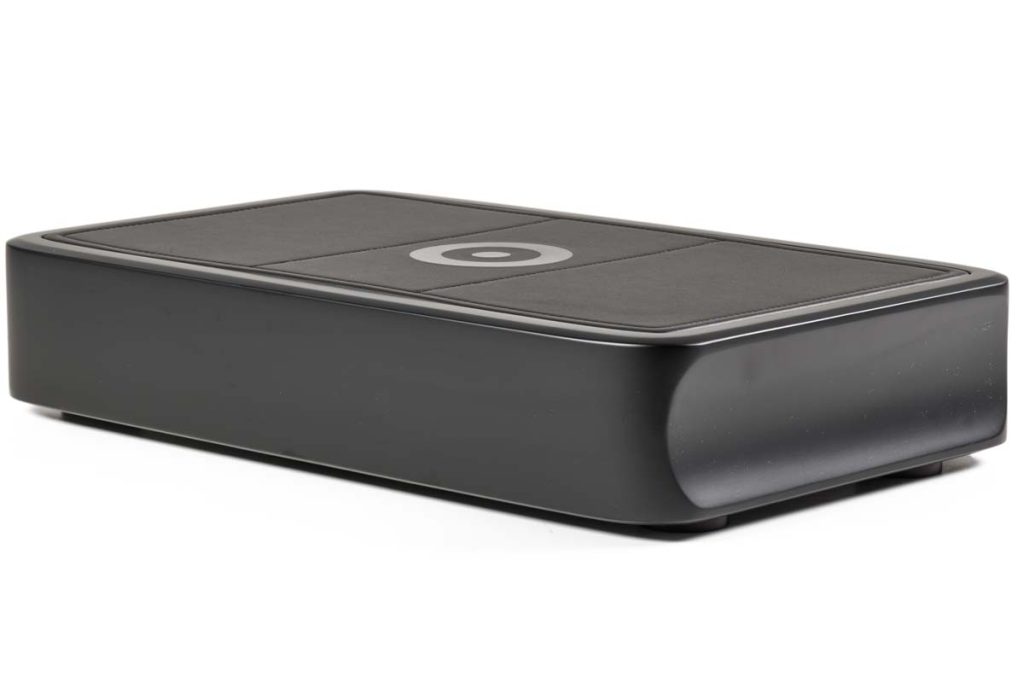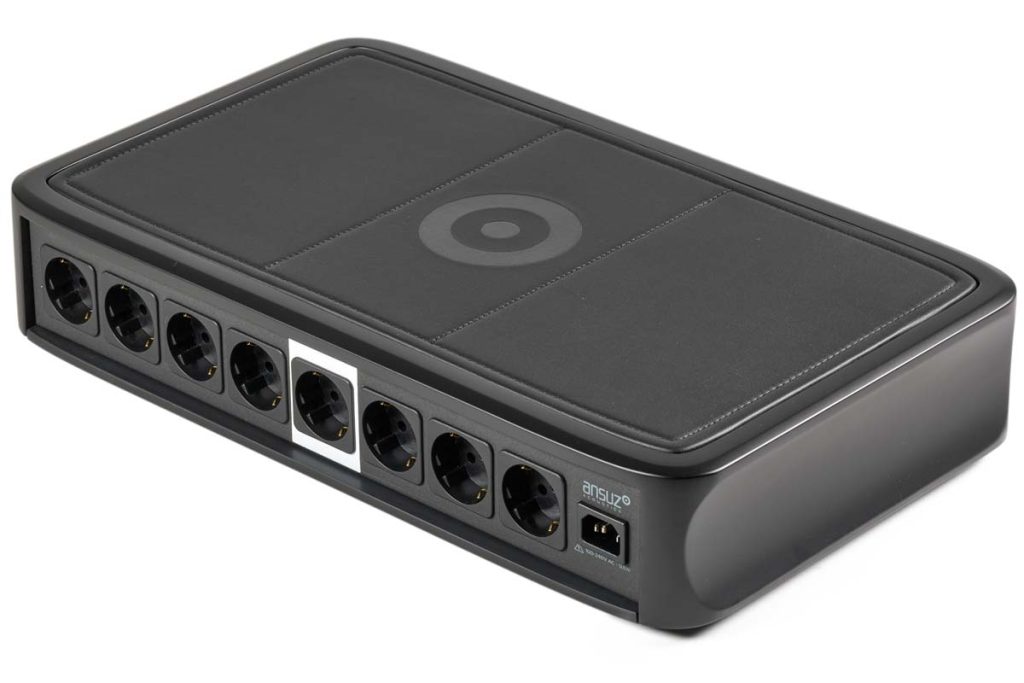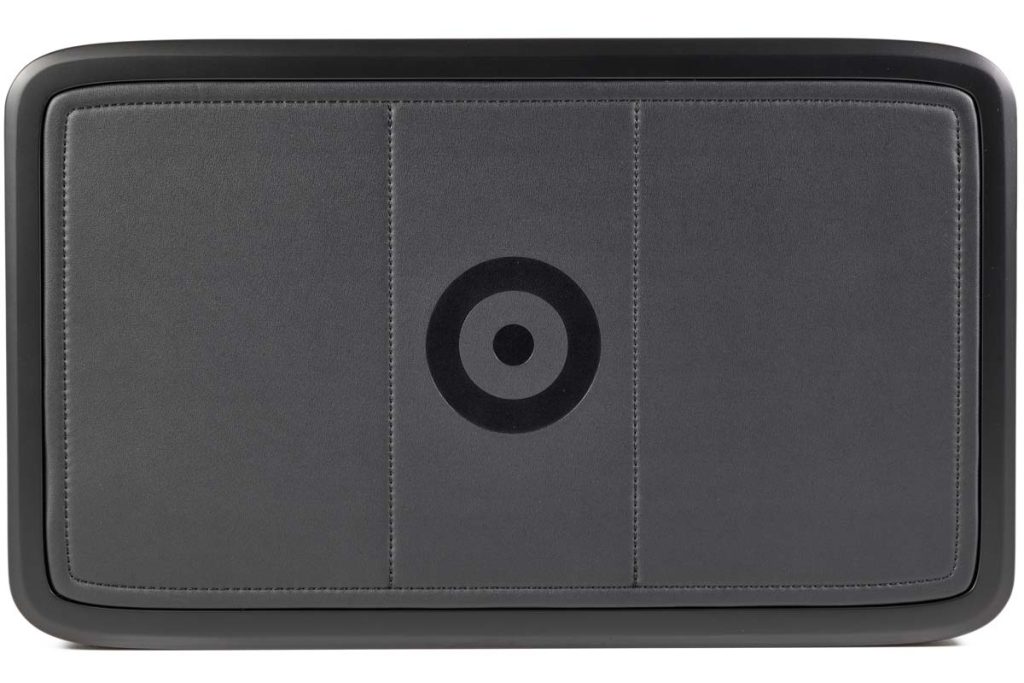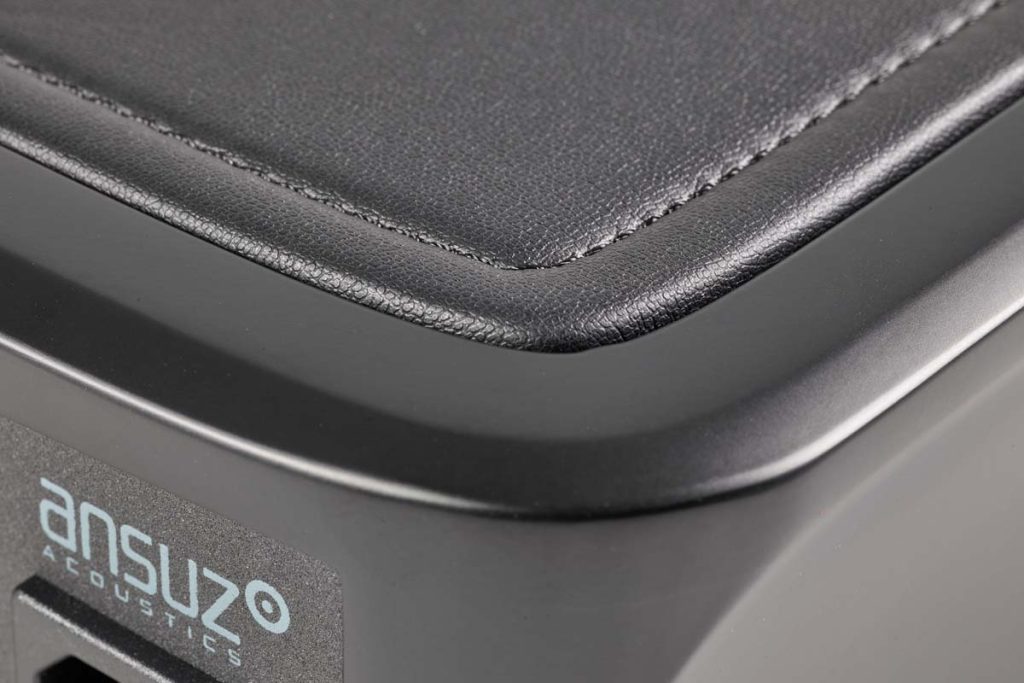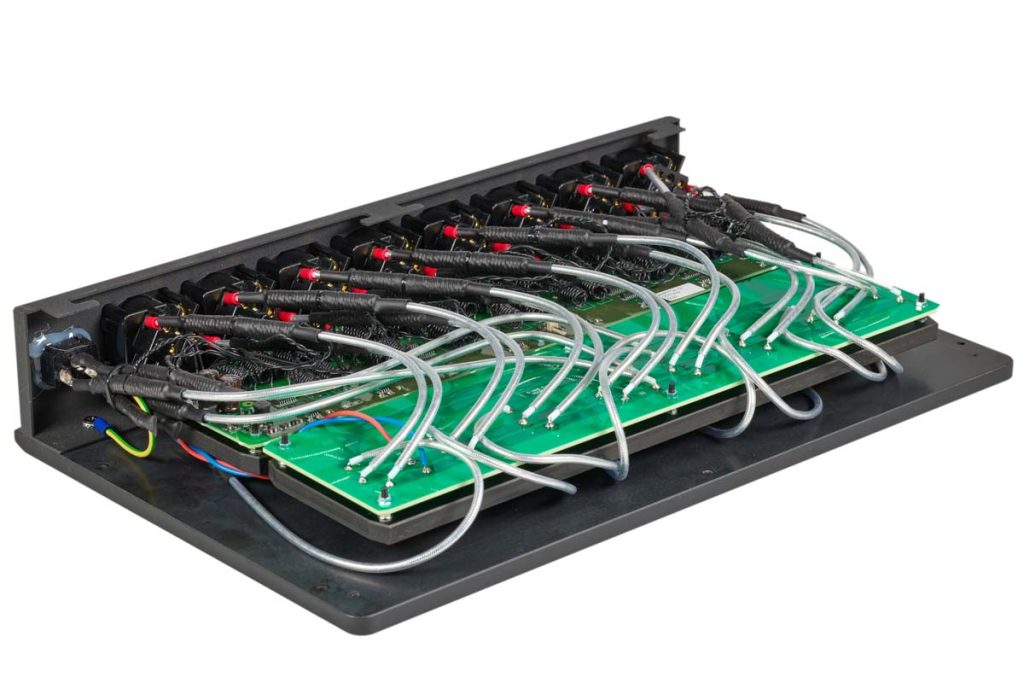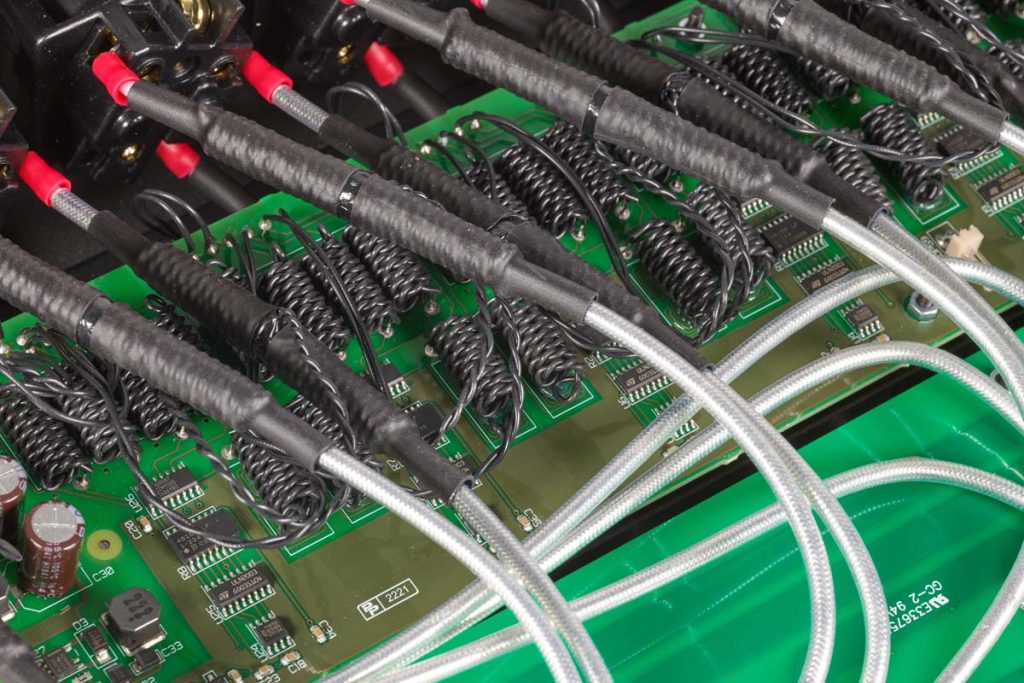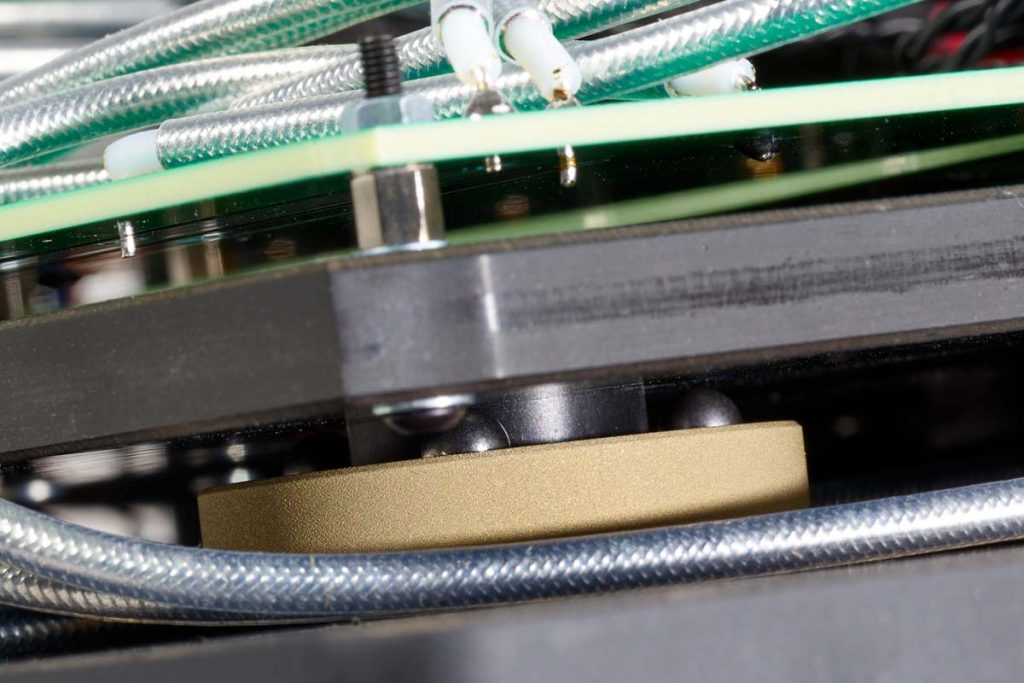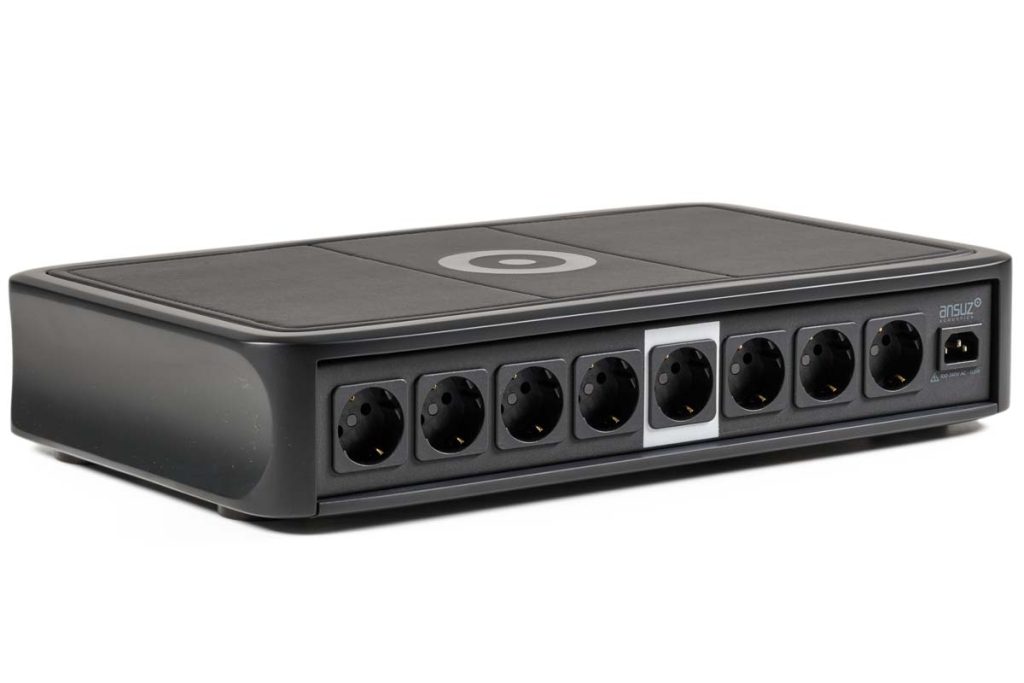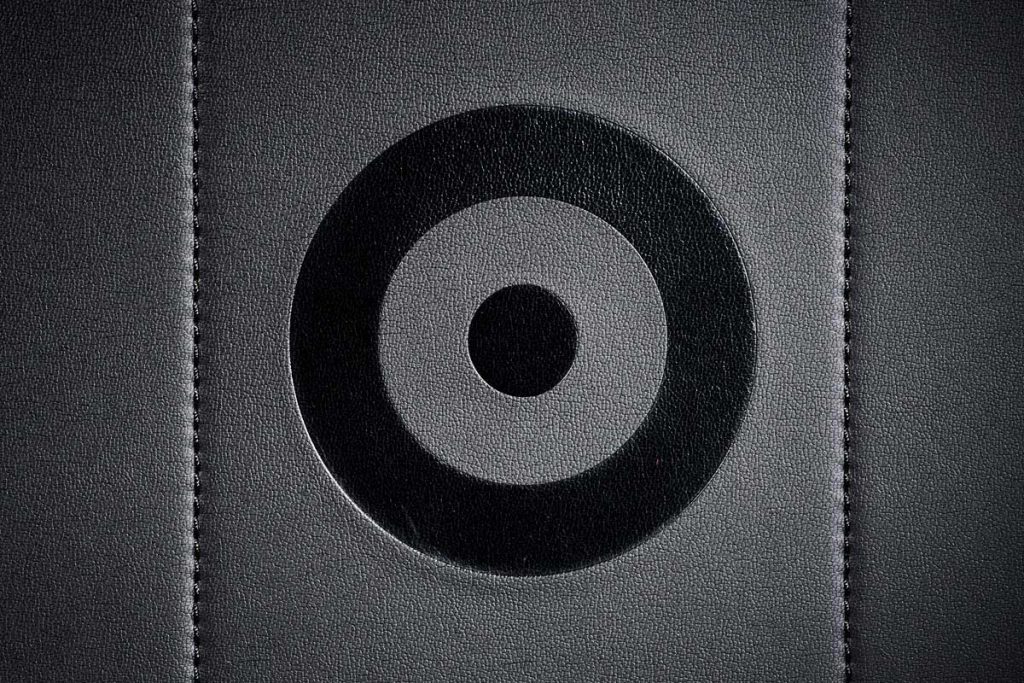Ansuz puts the cart before the horse: Instead of filtering for all it’s worth, the Danes prefer to use hand-picked materials and technologies to get the maximum amount of information out of the signal – and they seem to be right on the money with that. In the case of the Mainz8 D-TC3 premium power distributor, however, this comes at a price.
The mains, it was always for me the ultimate limit for the sound. No matter how good the equipment, no matter how much dedication was put into adapting the transducers to the electronics – the simply lousy power supply in my turn-of-the-century house in particular and in the inner city of my home in general successfully denied me the summit. What did I not do to remedy this deficiency. Isolating transformers, line filters and power conditioners came and went, some with more, others with less effect. That of all things the Ansuz Mainz8 D-TC3 Power Distributor from Ansuz Acoustics would have such a resounding effect, I would not even have guessed in the run-up to the test: The power distributor looks extremely unspectacular, it has no pointer instruments, no LEDs, no bells and whistles – and yet turned out to be one of the most important components that I have ever integrated into my stereo system. The black box with the leather-covered lid (a clever measure to avoid vibrations, as I was to learn later) embodies the apotheosis of the power strip. Its housing is made entirely of non-magnetic materials for the purpose of undisturbed current flow. And it offers a solid future security, because at it eight components find connection – there may be also times a few components more, which one does not only as test editor easily: Preamplifier and output stage, in addition sources such as Phonoverstärker, DAC, CD drive and Streamer and still this and that – already one has the Mainz8 D-TC 3 “plugged in”.
The Danish manufacturer advertises to have the most efficient grounding among all competitors. I can’t measure this at home, but I’m determined to believe it, because after connecting the distributor, not the slightest hum or noise is audible from my chain – matching the Mark Levinson No. 27 preamplifier No. 38S and the CD player No. 390S from the time when ML was already at Madrigal. The grounding concept provides for another special feature: In the center of the connections is a white power socket, which is the central ground reference. This is where the component with the most cross-connections must be connected, usually the preamplifier or integrated amplifier. Starting from there, the hierarchy decreases – my No. 27 has to make do with one of the outer slots.
This was different with many of my previous current conditioners or mains filters. Worse still, they usually acted as unwanted brakes and equalizers on what should come across as punchy and dynamically wide-ranging, especially with very dynamic music with fast impulses.
“Filtering often ensures that the dynamics suffer,” knows Morten Thyrrestrup, sales manager of the Danish manufacture Ansuz, and adds: “Conventional mains filters increase the induction – and that levels the music.” An opinion that Ansuz development director Michael Børresen shares. Quite a lot of importance is attached by the latter, as mentioned, to solid grounding. “All connected devices should see the same potential,” Børresen emphasizes. In the Mainz8 D-TC 3, the grounding is therefore star-shaped, which, in conjunction with many other measures, lowers the noise floor and largely banishes it to inaudible ranges. This is one reason why what comes out of the speakers is set against a perceived much blacker background. By the way, anyone wondering why such an almost tantalizingly plain black box costs 24 kilo euros should bear in mind how many thousands of hours were invested in developing the Mainz8 D-TC 3 alone, always with the ear as the last resort. And that the so hand-flattering flowing designed metal cuboid is the result of meticulous handwork in the high-wage country Denmark. Nothing here is off-the-peg, but hectoliters of heart and soul have gone into the D-TC 3.
To keep induction – also an obstacle to the flow of current – as low as possible, Ansuz uses double-inverted, parallel-connected Tesla coils that look like tiny climbing ropes, artfully twisted within themselves. Noise is also countered by the manufacturer’s continuously improved dither technology. Its basic idea originated in the years of World War II to sharpen the “look” of newly developed radar to help detect attacking enemy units such as aircraft and ships – much like a polarizing filter in photography. “When the first radar stations were put into operation, it was noticed that the signals became clearer when equipment around them was operating and supposedly interfering with the signal,” explains Michael Børresen. With Ansuz, therefore, once the noise has been largely eliminated, some “noise” is added back in, providing a continuous (albeit tiny) modulation of the signal. Michael Børresen describes this with a hand with splayed fingers held over a page of text: “If you hold it still, you only recognize parts of the text. If, on the other hand, you wave it back and forth, everything becomes legible.”
If you consider that it is actually “only” about the best possible power supply here, the effect is even more amazing. The Mainz8 D-TC 3 Power Distributor provides lightning-clean sounds that always seem “punchy”, open and dynamic, and are free of soft-sponge symptoms. Because Michael Børresen has also banished vibrations (“devastating for the sound”) from his ultimate Mainz8 through clever material selection and cabinet design, the connected system can unfold its talents more unaffected than ever. Of course, this is also due to meticulous detail solutions such as the carefully cast cold-device socket for the main connection or the aforementioned thick leather lamination of the case lid.
Even very good, spatially and tonally perfectly balanced recordings – recently I received the first two episodes of the Wagner Ring under Georg Solti, carefully remastered and re-released by Decca on SACD and LP, which turned out absolutely spectacular – gain extremely through the Mainz8 and please with almost holographic three-dimensionality and a previously unknown transparency. The pop, rock and blues faction will be pleased with dust-dry low frequency impulses. The bass on Peter Gabriel’s So, once the quintessential test CD of the 1990s, feels immensely deep, rich, punchy and yet crystal clear through my semi-vintage equipment, which seems miraculously rejuvenated with the Mainz8 D-TC3 Power Distributor; Gabriel’s voice gives goosebumps with super presence. If you have a really good chain, you should definitely listen to the leap forward it makes with the Power Distributor.
Wire it up, make sure the power plugs are in the right phase and give the Mainz8 D-TC3 Power Distributor a stable place to stand. That’s all it takes for the sound sun to rise.
Accompanying Equipment
Network player/DAC: Esoteric N-01XD | CD player: Mark Levinson No. 390S | Turntable: Clearaudio Innovation Compact, Artkustik Seismograph | Cartridges: Clearaudio Da Vinci and Jubilee MC, Denon DL-103R | Phono amplifier: Clearaudio Balance V2 | Preamplifier: Cambridge Audio Edge NQ, Mark Levinson No. 38S | Integrated amplifiers: Mark Levinson No. 5805, Aavik U-380, Trigon Exxceed | Power amplifier: Cambridge Audio Edge M, Mark Levinson No. 27 | Loudspeakers: Infinity Kappa 7.2 Series II, SoundSpace Systems Aidoni | Cables: from in-akustik, AudioQuest and Silnote Audio, among others
Power Distributor
Ansuz Mainz8 D-TC 3
Concept: pure mains connection distributor, no braking filtering | Input: 1 x 230/110 V (IEC C14) | Outputs: 8 x Schuko, gold plated | Special features: Tesla coil technology, dithering circuit, non-magnetic housing | Dimensions (W/H/D): 51/10/30 cm | Weight: 8 kg | Warranty period: 2 years (5 years after registration) | Price: around 24 000 €
Audio Group Denmark
Rebslagervej 4
9000 Aalborg
Dänemark
info@audiogroupdenmark.com


